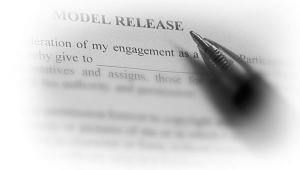Business Trends
Plan Ahead Now For 2006; Marketing Plans And Strategies For Building Your Business
Are you ready for 2006? If you have been reading this column all year you have probably picked up quite a few tips and techniques from successful photographers, from those who do weddings to architectural to fine art work. As the year turns I have been collecting some thoughts to help you plan for the New Year with a new (or perhaps renewed) marketing plan of action.
Better Websites
A website can attract new customers to your business, from local to across the
globe. Websites are a hybrid marketing tool, working both as an ad and as a
portfolio. As ads, they are broadcasting your message to the widest possible
audience. As portfolios, they can have all the intimacy of a one-on-one presentation.
When your website has high rankings in the search engines under appropriate
categories for your photography services, or many links from keywords prospective
clients might search for, you should get dozens of inquiries from clients who
otherwise might never call you, or even know you exist.
More Effective E-Mail Marketing
E-mail campaigns are similar to advertising. One single e-mail with no plan
or theme will yield minimal results. Here are some things to remember when trying
out this new marketing technology. Don't use a subject line of more than
35 characters. Use subject words that are concise and relevant to the client.
The subject line should contain at least one keyword that is a benefit to the
client. For example, try "photography for communications" or "children's
portrait photos."
Do test how your e-mail will display to clients. Broken links or raw HTML code
in e-mail marketing are ugly. Try setting up test accounts with the major online
services to see how they handle your e-mail. Always put yourself in the prospective
client's shoes to see how it looks to them. Don't be cute and use
words like "free" or "thank you" as these are often
spam-filtered and your e-mail will never be seen. Use online "content
checkers" (for example, try www.spamcheck.com)
to test your e-mail for words in the "To, From, Subject" lines and
even in the body text that might trigger a spam filter.
Do use a good permission-based e-mail list. Your best e-mail address list comes
from current clients and good prospects who have opted in to e-mail contact
with you. This consent may come from visiting your website, replying to your
direct mail, viewing your portfolio, or buying a list. Do have a specific goal
for your e-mail campaign. Regular contact with current and prospective clients
may be two different e-mail messages. For current clients, you can be more familiar
as they already know your work. For prospective clients, you will need a reason
that the client cares about. It could be new services available or current client
success stories. Be irresistible!
Don't go on and on. Your very brief e-mail body message should open with
the first couple of sentences designed to capture a client's interest,
then use active hyperlinks to selected web pages on your site. You do not need
to send them to your homepage.
Don't ignore "bounced" e-mail. "Bounced" e-mail
is when you send an e-mail to an address that no longer exists. It is a good
way for you to keep your own personal database clean. Also, today's ISPs
have rules, and if you exceed their standards for undeliverable (bounced) messages,
they could flag you as a spammer and block all your e-mail!
Those You Know And Those You Don't
Direct mail by e-mail can be an efficient solution for following up with prospects
who already know about you. But it's not the best solution to initially
introduce your photography to a prospect. Far too many companies are sending
out e-mail to people without their permission. Not only is this ineffective
as a marketing strategy (most clients simply delete e-mail they don't
recognize) but it can seriously backfire when someone is offended by your unsolicited
mail. Concentrate your e-mail efforts on those clients and prospects after "first
contact."
Don't Forget The Human Touch
Technology makes it too easy to get into some real impersonal marketing, but
that route is never as effective as the personal touch! When you have a website
and use e-mail to contact your customers, you may think there's no reason
to contact them in person. You may feel justified in not picking up the phone,
attending a networking meeting, participating in community events, or even suggesting
a lunch date if you think technology is doing the job for you. It is not. A
website or e-mail is never a substitute for a client or prospect hearing your
voice or seeing your face. It's pretty rare for someone to hire a photographer
without talking to him or her first, so if you put off the talking, you may
also be putting off the hiring.
- Log in or register to post comments
















































